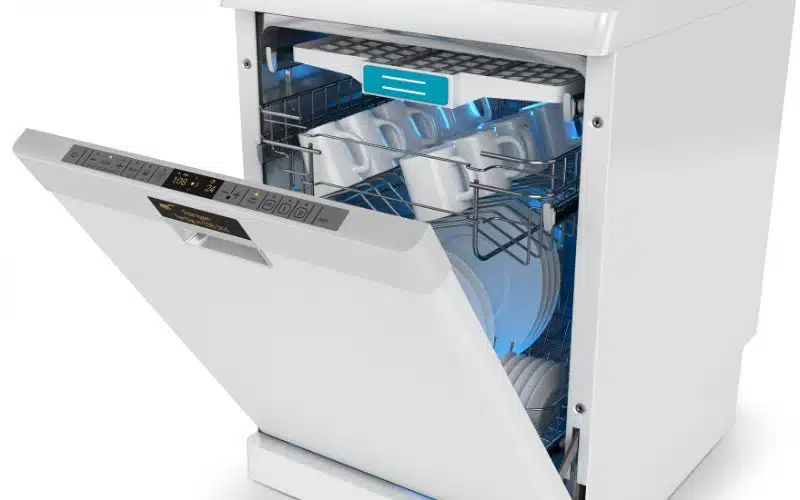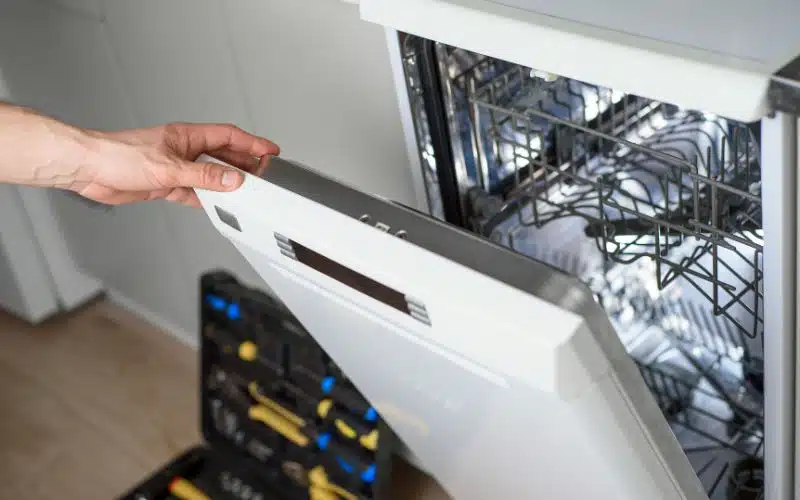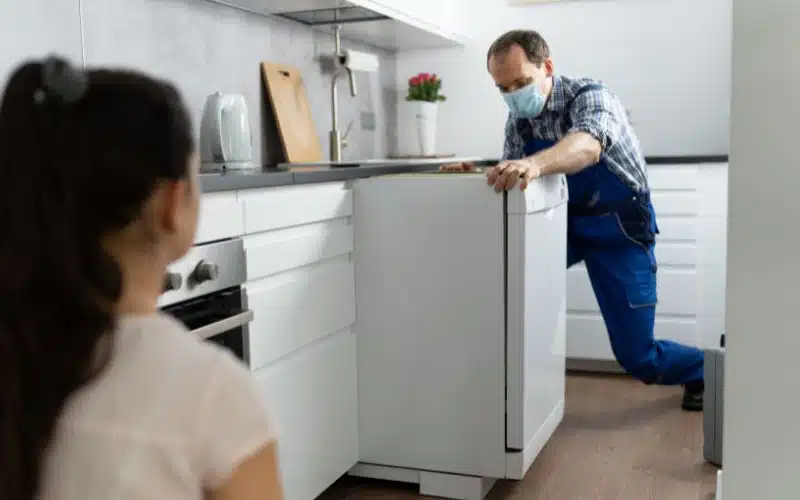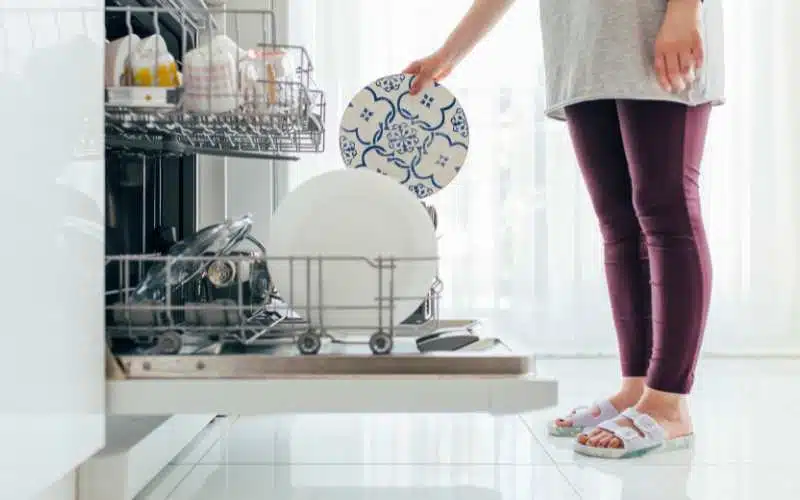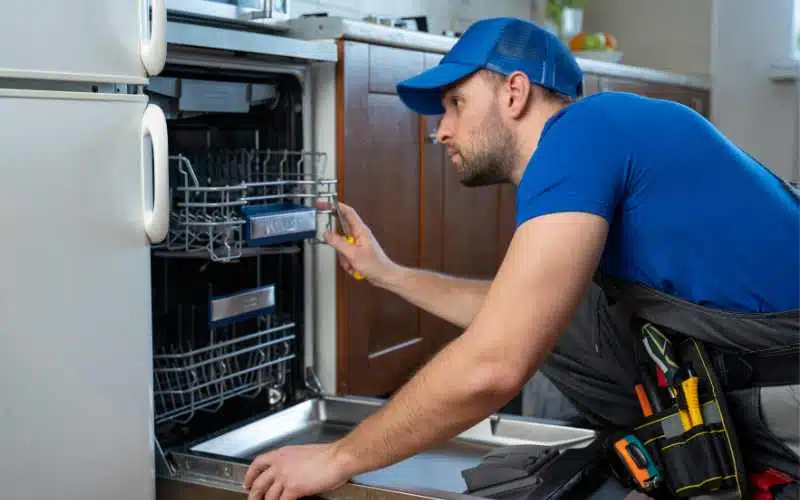It’s like a mini adventure every time you use your GE dishwasher. You hear it fill up with water, but then, surprise, it just stops! Why does it do that? Is it taking a break, or is there a hidden reason?
Let’s uncover the secrets behind why your dishwasher pauses in the middle of its job and how you can help it get back to washing those dishes spotless.
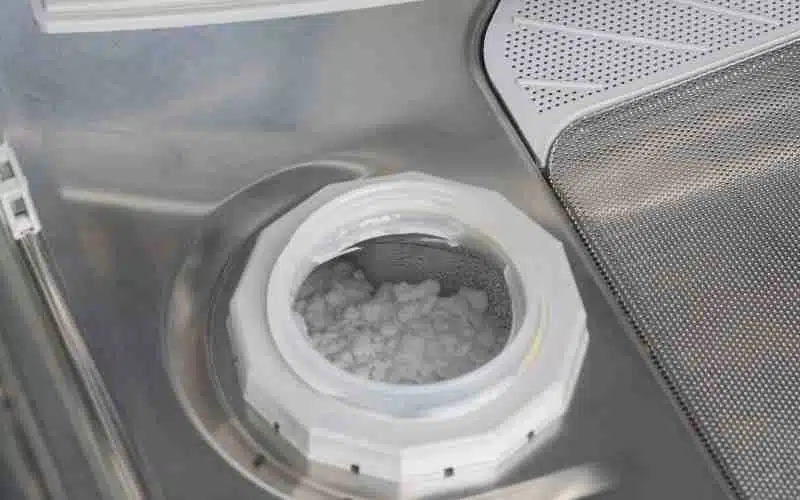
GE Dishwasher Fills Water Then Stops: Common Causes
- Stuck or Damaged Motor: Causes issues in starting the wash cycle.
- Filter Blockages: Clogged filters can disrupt normal operation.
- Pump Impeller Issues: Blockages or damaged blades affect water flow.
- Clogged Drain Hoses: Can prevent proper drainage and stop the cycle.
- Worn Drive Belt (Older Models): Affects the drain pump’s function.
- Faulty Drain Solenoid: Problems in draining water if the solenoid is defective.
Why Does My GE Dishwasher Fill With Water Then Stop?
#1. Stuck/Damaged Motor
Your dishwasher’s motor might be stuck or damaged. This happens especially when your dishwasher hasn’t been used for a long time.
Listen for a humming sound when you turn it on. If you hear this sound, the motor blades might be stuck and can’t start your wash cycle.
#2. Filter Blockages
Your dishwasher filter could be blocked. Grinders or blades that break down debris can get clogged over time. If they are clogged, your dishwasher won’t function properly.
#3. Pump Impellers
Blockages or broken impeller blades can stop water flow in your dishwasher. Your model may have one or two pumps.
One pump is for letting water in and another might be for draining it. If either is blocked or the blades are damaged, it can cause issues.
#4. Clogged Drain Hoses
Clogs in your drain hose can cause your dishwasher to stop. Look behind your dishwasher to inspect the hose. Disconnect it carefully and check for scales or debris that might be causing a blockage.
#5. Drive Belt
If your model is older, it might have a drive belt. The belt turns the pulley for the drain pump. Over time, the belt can wear out or break. When that happens, water won’t drain from your dishwasher.
#6. Drain Solenoid
The drain solenoid opens the drain valve for draining water. If your dishwasher fills with water but doesn’t drain, the solenoid might be faulty. Look for a burnt smell or burnt plastic – these are signs that the solenoid is not working.
Other Issues to Consider:
- Low Water Pressure: If your dishwasher isn’t filling correctly, check your home’s water pressure.
- Faulty Water Inlet Valve: Even a dishwasher that’s turned off should not fill with water. If it does, this valve might be malfunctioning.
- Error Codes: Some models display error codes. Check your manual to decode these signals.
- Foreign Objects & Debris: Always check your dishwasher for objects that shouldn’t be there. They can obstruct the components.
Remember to check these common problem areas if your dishwasher is acting up. Regular maintenance can help prevent these issues.
Possible Solutions to Fix the Issue
Checking Error Codes
If your dishwasher has a display screen, look for the error code and refer to an error code guide for a solution. If you’re unsure, consider calling a technician, especially if you encounter complex codes like those explained on helpful sites.
Manual Troubleshooting
For models without screens, you’ll need screwdrivers and pliers. Start with the filter, located where you load dishes.
- Remove the dish rack to access it.
- Run water through the filter to remove particles.
Impeller and Motor Issues
- Use a screwdriver to check the motor’s impeller for resistance.
- If it’s stuck, try to manually spin it until it moves freely.
Replacement of Parts
When specific parts are broken or worn:
- Replace faulty pump impellers or a burnt drain solenoid with exact replicas using their identification numbers.
- For a damaged drive belt, obtain a new one and fit it in place.
- For electrical issues like a faulty water inlet valve, it’s safer to call a professional.
Cleaning
Sometimes, just a thorough cleaning is needed:
- Detach and clean out clogged pump impellers or drain hoses with running water to clear debris.
- Always check for continuity and resistance in electrical components with a multimeter to ensure they are functioning correctly before and after cleaning.
